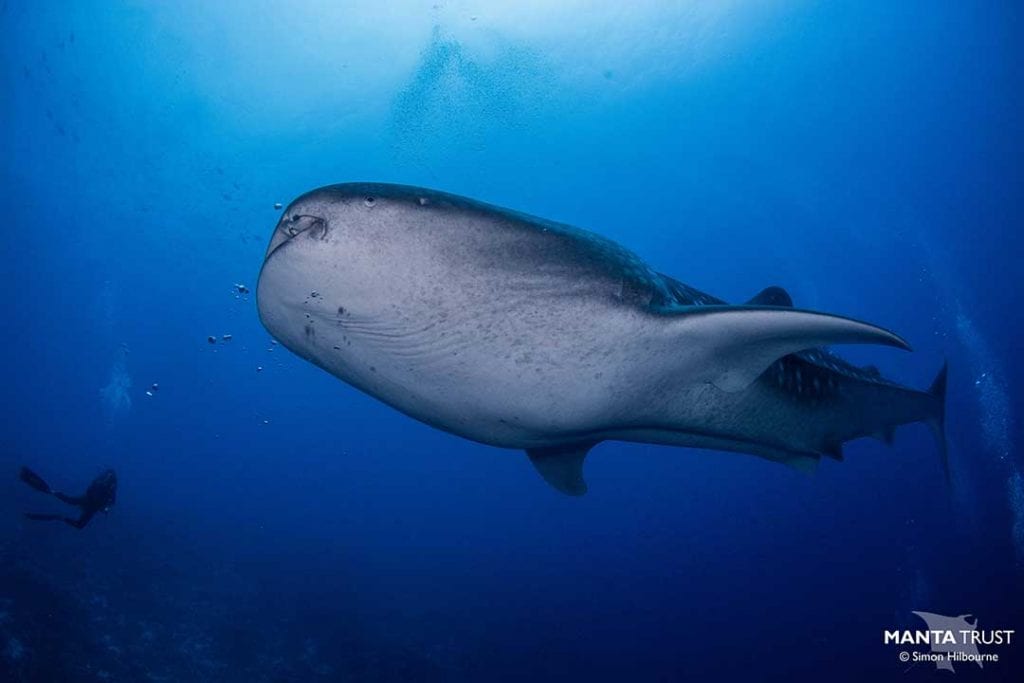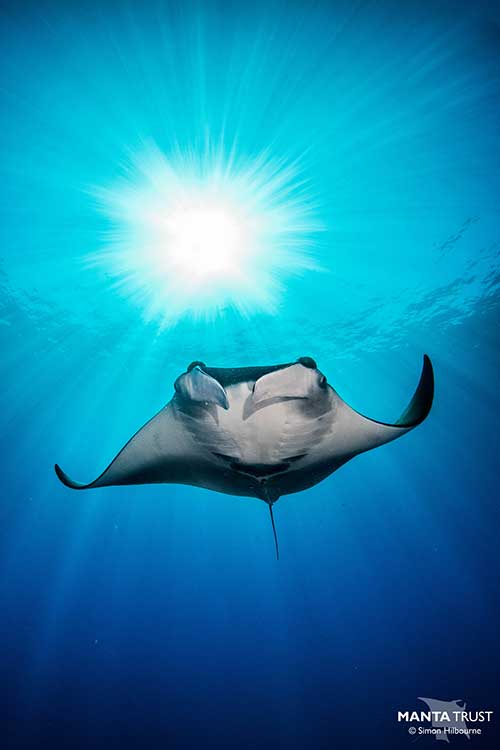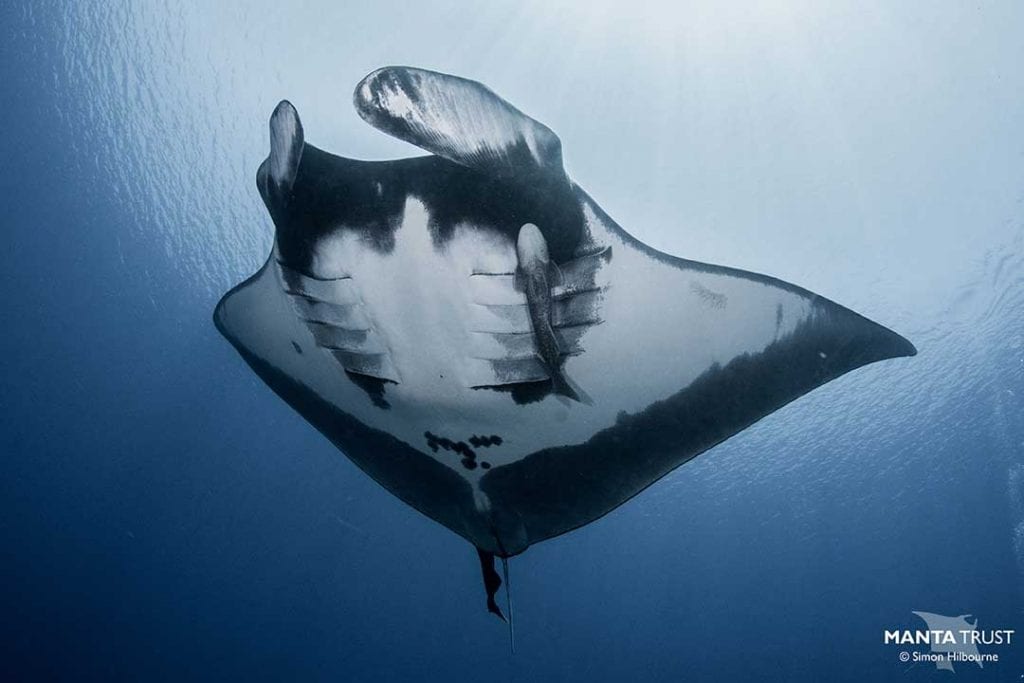Unlocking the mysteries of the Fuvahmulah’s oceanic manta rays
Situated in the deep south of the Maldives lies an atoll unlike any other. Isolated far from any other land, made up of just a single island and encompassed by plunging reef walls, Fuvahmulah Atoll is a special place. The reefs around Fuvahmulah act as a magnet for large pelagic species including whale sharks, thresher sharks, hammerhead sharks, tiger sharks, mola mola, and our favourite, the oceanic manta ray.
The Manta Trust have known of oceanic manta rays in the region for several years, but we have only had limited opportunities to access the atoll until recently. Only in the last few years have we been able to actively pursue research activities on this population.
In 2019, with the help of local dive operators, citizen scientists and Manta Trust researchers, the team identified over 350 individuals in a short four-week period. Considering the relatively small population sizes recorded globally, to identify this many individuals in such a short period was truly incredible. This nearly doubled the known population of oceanic manta rays in the Maldives. What was equally remarkable about this event was that on nearly every dive, every day we would be identifying new mantas. These animals did not appear to be sticking around but rather transiting through. Where they had come from and where they are going is still a mystery. What’s more is that these manta rays are not cleaning, feeding, or engaging in courtship behaviours which are all common drivers of movements and migrations.
It isn’t just the oceanic manta rays around Fuvahmulah that are fascinating. Whale sharks are seen throughout the Maldives Archipelago, but most of them are juvenile males (as is the case with most whale shark aggregations worldwide). In Fuvahmulah however, the whale shark we’ve encountered and submitted to the Maldives Whale Shark Research Programme (M.W.S.R.P) have been large females! Why there is sexual and size segregation between populations, and why the females visit Fuvahmulah, in particular, are intriguing questions.
Sadly, in neighbouring Sri Lanka and India, targeted and bycatch fisheries are landing hundreds of oceanic manta rays each year. Blue Resources Trust’s mobula fishery project, an affiliate of the Manta Trust, have been surveying the fish markets in Sri Lanka and through talking with fishermen know they travel across the Indian Ocean on their multi-day trips. The gills are exported to East Asian to be used as a pseudo-remedy and it is this trade that makes the catch of oceanic manta rays valuable.
In 2020, the Manta Trust had planned to ramp up research activities with a far larger team to fully maximise the season. We were planning to have six researchers on the island, hire a dedicated research boat to go out and survey for mantas and partner up with the Maldives Whale Shark Research Programme. Unfortunately, the timing of the season lined up with the global outbreak of COVID-19. Movements of researchers within the country were suddenly halted and we made the tough, but right decision to cancel the research season entirely in 2020.
Later that year, following a reassessment of global population trends and threats, oceanic manta rays were up-listed to ‘Endangered’ on the IUCN Red List of Threatened Species. This reassessment of the species’ conservation status was based on declining population trends worldwide as a result of fisheries.
The setbacks in 2020 and the up-listing of oceanic manta rays has spurred us on to come back stronger in 2021 and to make up for lost time with regards to collecting data on this population. Again, collaborating with the M.W.S.R.P, we have put together a team of six researchers mostly made up of Maldivians. This way, not only can we maximise the in-country capacity building of Maldivian marine conservationists, but it adds a level of protection for the project if the global pandemic takes another turn and international travel is impeded.
We are excited to return to the fascinating Fuvahmulah and are intrigued to find out what this season will have in store for us. Learn more about the Manta Trust’s Maldives Oceanic Manta Ray Project.



